 The Chicken Problem
The Chicken Problem
By Jennifer Oxley and Billy Aronson
Random House
$16.99
ISBN: 978-0-375-86989-1
Ages 3-7
On shelves now.
I was once in Prospect Park in Brooklyn when I passed a very small child wearing a porkpie hat running as fast as his chubby legs could carry him. Behind him his father yelled out (to little avail), “Pontius! Pontius, slow down!” I mention this because there is a particular Brooklyn aesthetic to a picture book like The Chicken Problem. Consider, if you will, its heroine Peg. Here she is sporting a mighty trendy little outfit replete with striped tights and buckled red boots. Even her name, Peg, suggests that she was named after Peggy Lee or someone of equal caliber. Notice too that she’s playing a ukulele on the endpapers and that pretty much clinches it. Peg is trendy. Too trendy for your preschooler? Not in the least. Peg may be a specific type of heroine peculiar to a single geographical location but with her urbane Cat and her trouble with high-spirited chicks this is one of those memorable heroines and one-on-one readalouds that add a little bit of math to a little bit of story alongside a whole lot of fine and beautiful art to bring us one fine fine book.
It’s a bright and beautiful day when young Peg and her cat Cat go to the farm to have a perfect picnic with a pig. Peg is one of those girls who like everything to be just so, and when she discovers that she accidentally cut an extra slice of pie she feels it’s a dire problem. Cat solves the imbalance by removing a very small chick from a nearby coop and surely that would be the end of that . . . if he’d managed to remember to close the coop door. Suddenly one hundred chickens are free and roaming the farm. It’s up to Peg, Cat, and maybe that pig they picked up, to figure out a way to cajole these freedom loving fowl into returning from whence they came. When that mission is finally accomplished that leaves one final matter: Time for pie!
I’ve read the occasional professional review that snarked about the svelte story found here, but to be honest I was rather charmed by it. It’s not the most dire straits that Peg and Cat must escape but in the simplest sense it’s a story with a mistake, a solution, and a conclusion that feels satisfying. The language itself repeats in good ways and sounds pleasant on the tongue (“The pie was fresh and juicy and gooey”) while the plot appeals to the pint-sized obsessive compulsives out there that insist that everything be exactly right.
The art is particularly charming, though I found I couldn’t figure out the medium. If I was going to harbor a guess I’d say that it was digital art doing a stand-up and cheer imitation of mixed media. I might have figured it to be done by hand, were it not for the fact that on more than one occasion a chicken will repeat in a large crowd scene. No matter, since it’s the charm of the characters that ultimately pull this puppy through. Peg, noseless though she may be, is a likeable soul. Cat, a feline I initially considered lacking in smiles, turns out to have quite a bit of nuance to his rotund eggplant-like little body. The pig is always referred to as “a pig”, as if he were just some barnyard stray the duo stumbled over on their travels. He seems so content wherever he is, legs neatly crossed beneath him, that you suspect he’d follow Peg and Cat to the ends of the earth if they asked. As for the chickens themselves, they’re beautifully expressionless and yet you spend a lot of your time just trying to keep up with their antics.
Speaking of endpapers, I’ve seen inside jokes in my day. I’ve seen clever details and little pokes of fun. What I have never seen are endpapers that are SO o’erfilled with details and ideas that you could spend the better part of twenty minutes parsing them. It is important to know that the front endpapers are incredibly different from the back endpapers. I mention this in part because I know that libraries have a tendency to glue their bookflaps to their books’ front and back covers and the result is going to cover up quite a bit of content. At the front of the book you can find six scenes drawn from Peg and Cat’s adventures. Sometimes they might be rowing George Washington over the Delaware while other times they’re jamming with a band of bears. Quick flip to the back of the book and you’ve the strangest collection of one hundred chickens you ever did see. An explanation is provided in the special thanks section. It says, “And, for posing so patiently for the pictures, the one hundred chickens,” and then names each and every last one of them. It took a while for me to realize that the names correspond with the pictures on the opposite page. I had already looked at the pictures of the chicks before and noticed odd details about them (like the fact that one of them resembled President Obama on his HOPE poster) but didn’t realize that each one had a name (“Barawk Obama”). Look closely enough and you’ll find references to Lady Gaga, Mahatma Gandhi, Rumpelstiltskin, St. John, George Bernard Shaw, and many others. My personal favorite was the preppy turtleneck donning Cluck C. Cluck III. Even without reading his name I knew he was a 1% chicken, if you know what I mean.
As the bookflaps explain, Peg and Cat are well on their way to becoming a television series on PBS that teaches preschoolers math someday. And while that might account for some of the adventures on the endpapers, the story stands perfectly well on its own. I don’t need to see Peg on my TiVo to know she’s a special kind of kid. Whether or not the show occurs, I do hope that we’ll see more of Peg and her erstwhile purple companion on good old-fashioned paper and board in the future. I suspect folks will end up picking up the book more for the art and story than the math, and that’s okay. Fun pretty much sums it up.
On shelves now.
Source: Final copy sent from publisher for review.
Like This? Then Try:
Interview: Nerdy Book Club
Video:
There was a cute little book trailer, of course:
And though its website is gone, you get a pretty clear sense of Peg, Cat and their world here.

I am now entertaining the ridiculous hope that when the show premiers they make Peg-with-ukelele YouTube videos like the millions already out there. Just Peg, a ukelele, a blank wall, and one of her songs. I mean, might as well at this point, right?

Silver Bay YMCA, Adirondack Mountains, NY
Hello, from Lake George in the Adirondacks. There are white caps on the blue lake, nestled amidst fading fall colors. This weekend, 35 children’s picture book writers gathered on the shore to schmooze, learn, talk, gossip, and passionately discuss the art and craft of writing a 32-page children’s picture book.
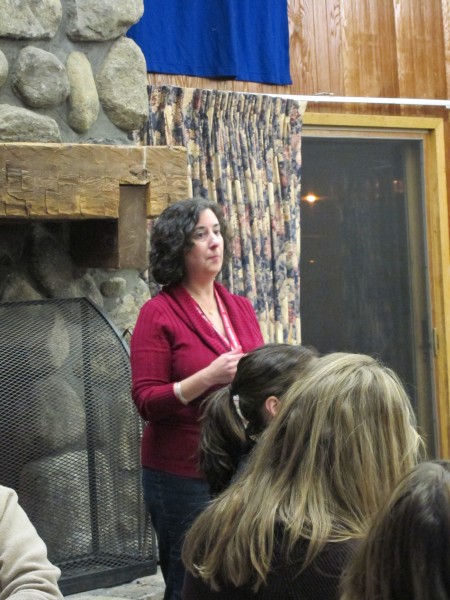
Nancy Castaldo, SCBWI Eastern NY Regional Advisor
Thanks
Nancy Castaldo, Regional Advisor of the Eastern NY SCBWI for a great retreat, an excellent editor’s weekend.
In attendance were 35 writers, who were fabulous. See pics on Facebook soon.
5 Picture Book Editors
Speaking were five editors: Sylvie Frank of Holiday House, Kelly Smith of Sterling, Dianne Hess of Scholastic, Marilyn Brigham of Marshall Cavendish, and Kate Fletcher of Candlewick.
(NOTE: Please see the publishers’ websites for submission info.)
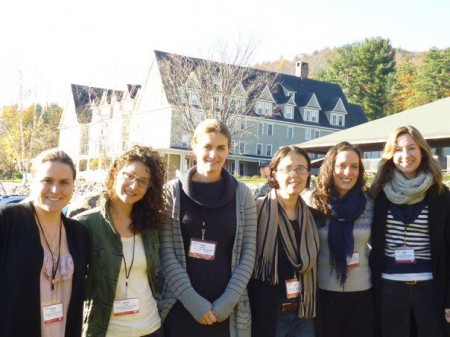
(L ro R) Marilyn Brigham, Sylvie Frank, Kate Fletcher, Dianne Hess, Katrina Damkoehler, and Kelly Smith. Photo courtesy of Nancy Castaldo.
Sylvie Frank, Holiday House

Sylvie Frank, Holiday House
Sylvie Frank is the Miss Elizabeth Swan (from “Pirates”) of children’s literature; she’s a dashing woman who chooses to challenge herself by running a marathon. Sylvie’s mother is the children’s book author
Martha Freeman, so Sylvie grew up with all things literary and the ups and downs of the publishing world. Look out–she’s going to make a name for herself! Sylvie brings a smart, sincere, yet fresh view to the field. She’s authentically excited about story possibilities and realistic about what it takes to bring a story to market. She’s interested in anything from picture book to YA.
Kelly Smith, Sterling Books

By:
Darcy Pattison,
on 9/19/2011
Blog:
Darcy Pattison's Revision Notes
(
Login to Add to MyJacketFlap)
JacketFlap tags:
story,
kids,
book,
picture,
picture books,
write,
revise,
how to,
childrens,
Add a tag
Random Acts of Publicity DISCOUNT:
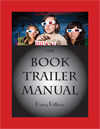
$10 OFF The Book Trailer Manual.
Use discount code: RAP2011
http://booktrailermanual.com/manual
Writing is rewriting
 Guest post by Anastasia Suen
Guest post by Anastasia Suen
For years I have been saying that writing is rewriting, and now I have a book that shows it quite clearly, my new picture book, Road Work Ahead (Viking 2011).
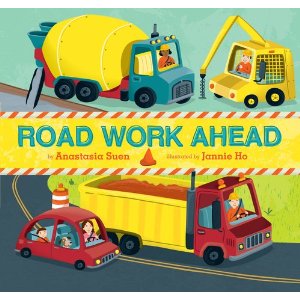
This picture book is short, like most of my books. It’s only 120 words, but those words have been rewritten over and over again. Yes, this one has been a lo-o-o-ong time coming. I started this book when my son was 2…and now he’s 27!
Picture Book Inspiration
When my son was 2, he loved to look at all of the trucks and machines along the road, so I started snapping pictures for him. I made him a “look book” that later turned into a picture book. I loved the story in that book, so I sent it out to editors, but it kept coming back, over and over. Editors said they loved it, too, but it wasn’t quite ready. So I kept rewriting it and sending it out…and now 25 years later, it’s finally a book you can hold in your hand.
The 6 Ws of Story
So what made the difference? I used ALL of the 6 Ws this time. I made sure the story had who, what, when, where, why and how. Using all 6 Ws made it a story, not just a list of machines along the road. Stories sell, but lists…well, not so much.
New Beginning and Ending. After the story finally sold I thought it was ready to go, but my editor thought it needed something more. She asked me to write a new beginning and ending, so we knew why the little boy was on the road looking at all of the road work. That also added a who, by showing us the little boy before he got into the car.
So I added my mother and her famous homemade oatmeal cookies to the book. (We used to eat them right after they came out of the oven. Yum!) Driving to Grandma’s house for fresh, warm, homemade oatmeal cookies is definitely a reason to keep going despite all of the traffic delays due to the work along the road. And when you get to eat them at the end of the book, ah, sweet reward! Adding 2 short stanzas was all it took.
The change I made was used by the Publishers Weekly reviewer to describe the book.
“A batch of Grandma’s homemade oatmeal cookies beckons, but for this backseat narrator, the sights and sounds along the road to her house are equally compelling:
“Road work ahead./ Move over. Go slow./ Jackhammers crack./ Look at them go.’”
The text quoted in the review was the original beginning of the story. I had jumped too far into the action. What worked better was taking a few steps back and letting the reader know who the narrato
It's National Poetry Month and a child is never too young to enjoy the beauty of poetry. Here are some excerpts and Poetry Month suggestions from our newest poetry titles!
 Won Ton: A Cat Tale Told in Haiku
Won Ton: A Cat Tale Told in Haiku
By Lee Wardlaw; illustrated by Eugene Yelchin
Nice place they got here.
Bed. Bowl. Blankie. Just like home!
Or so I've been told.
Visiting hours!
Yawn. I pretend not to care.
Yet---I sneak a peek.
 Pablo Neruda: Poet of the People
Pablo Neruda: Poet of the People
By Monica Brown; illustrated by Julie Paschkis
 Peaceful Pieces: Poems and Quilts About Peace
Peaceful Pieces: Poems and Quilts About Peace
By Anna Grossnickle Hines
Will peace come with drums?
Be heralded by trumpets?
Prance in waving red
and gold banners?
Will peace make
a great noisy show?
 Lemonade: And Other Poems Squeezed from a Single Word
Lemonade: And Other Poems Squeezed from a Single Word
By Bob Raczka; illustrated by Nancy Doniger

Falling Down the Page
Edited by Georgia Heard
 Hurricane Dancers: The First Carribbean Pirate Shipwreck
Hurricane Dancers: The First Carribbean Pirate Shipwreck
By Margarita Engle
I listen
to the song
of creaking planks,
the roll and sway
of clouds in sky,
wild music
and thunder,
the groans
of wood,
a mourning moan
as this old ship
remembers
her true self,
her tree self,
rooted
and growing,
alive,
on shore.
Check out this adorable pic that author Lynne Jonell got from some of her SECRET OF ZOOM fans!
Says Pamela Klinger-Horn, Book Club Facilitator at the Excelsior Library and Immaculate Heart of Mary Catholic School...
On Monday March 15th, twelve girls in fourth and fifth grade participated in a lively discussion of Lynne Jonell's novel "SECRET OF ZOOM." Apparently, Lynne and her character Christina are not the only 10 year olds who have dreamed of owning a tiny personal airplane. All the girls had also read "EMMY & THE INCREDIBLE SHRINKING RAT" and are anxiously awaiting the publication of "RATS IN THE BELFRY" (July 2011). Thank goodness we have Lynne Jonell to keep the book club supplied with great literature.


By:
Darcy Pattison,
on 10/25/2010
Blog:
Darcy Pattison's Revision Notes
(
Login to Add to MyJacketFlap)
JacketFlap tags:
teen,
middle,
how to write,
grade,
novel revision,
length,
early chapter,
book,
picture,
novel,
ABC,
Add a tag
When Stories Start to Go Wrong!
Here are some descriptions of manuscripts. Read them and figure out what’s wrong:
- 6000 word, ABC book
- 13,000 word middle grade
- 250,000 YA/teen novel
- 2000 word YA poetry book
- 4000 word picture book
Match Audience with Length and Format of Your Story
In each of these cases, the format, especially the length of the manuscript, does not match up with the intended audience.

Here’s a typical run down of manuscript lengths for different formats:
Picture book, including ABC titles. The hottest items are under 500 words. Some picture books can go up to 2000 words, but those are iffy. The audience for picture books can be anything from birth to about 10 years old. Usually the break down is something like 1-3 years old, 2-4, 4-8 or 6-10, though it varies from publisher to publisher.
The best advice for a picture book manuscript is “cut it in half.” Yes, it’s hard in 500 words to have a beginning, middle, end, a satisfying narrative arc, and a character that kids want to spend time with. Welcome to the difficult world of picture books.
ABC books, especially Sleeping Bear Press ABC titles, sometimes will go longer. But essentially the ABC format is just a way to organize information. These are not true ABC books for preschoolers.
Beginning reader and early chapter books. These are aimed at the beginning reader, so ages 4-8. For the truly beginning reader, the text may just be a couple words on each page. This is the only place where a publisher will try to control vocabulary, choosing words with regular spelling or from the sight vocabulary lists. By second grade, though, kids are reading short chapter books, and there’s more leeway in vocabulary and complexity of texts. These run maybe 6000-12,000 words, again depending on a publisher’s inclination and publishing program. Usually these are contemporary stories, grounded in a child’s real world.
Short chapter books. Some people add this category for 3-4th graders. These are short novels (novelettes?) of about 12,000-20,000 words. The topic of these books changes slightly to allow for historical fiction, science fiction or fantasy, or mysteries.
Middle grade novels. For grades 5-8, or about 10-14 years old, the middle grade audience has a wide variety of interests that are reflected in their fiction. Novels for this group run 30-80,000 words, but tend to fall more in the 40-60,000 range. Only the rare Harry Potter will go to 100,000 or more.
YA/Teen novels. For ages 12 and up, the YA or Teen novel has an almost free rein in length, complexity and subject matter. Still even here, the average novel might run 60,000 or so. You can go longer or shorter, if there’s a good reason for it. Some have said that YA novels are just like adult novels, just 100 pages shorter and without the sex scene. Today, you can add both the 100 pages and the sex scene. What distinguishes this literature is the tone of the story, particular the tone of rebellion of some sort. It’s a time of life when kids must break with their parents and figure out life for themselves; that’s what is reflected in the liter

By:
Steve Novak,
on 8/2/2010
Blog:
Steve Draws Stuff
(
Login to Add to MyJacketFlap)
JacketFlap tags:
kids,
book,
picture,
zoo,
monkeys,
steven,
novak,
completed,
cover,
time,
colored,
kid,
albert,
interiors,
little,
canonbridge,
Add a tag
I polished off the cover for Albert at the Zoo early last week, and I'm pretty pleased with the results. It's a nice looking cover. I think it relates to the first book well.
This edition is going to have full color interiors, so I've got a lot of work ahead of me and a very little window in which to do it.
Ain't it always the case?
This is the new book I've nearly finish with Daryl K. Cobb

Contact him if you wantInteractive Educational Assemblies
Music & Storytime Show
Summer camps, Libraries and Schools
Multi-Media Show
Interactive performances & readings
Perfect for children ages 2-8
-------------------------------------------------------------------------------------------
Booking 2010-11 Season Now!
Contact Me Today!
Each year I inspire thousands of students to read, write and be creative.
I hope that you will join me this season and celebrate the adventure of creativity.
Join the adventure and read!
-------------------------------------------------------------------------------------------
I’m currently revising a picture book and finding it to be a bit tricky because I created animal characters. Of course, in a fiction picture book, animal characters are often just stand-ins for kids.
Why Use an Animal Character in a Fictional Picture Book?
Get Rid of Adults. I wanted to have two characters playing on a beach. Uh-oh. That’s dangerous if it’s just two kids; without adults around, the story would never be accepted. But in this case, the adults/parents would just clog up the story. So, make them animal characters and the story works great. No one worries about a chicken or a dog or a sea gull or something similar running around on a beach.

Express Potentially Difficult Emotions. Books with kids who get mad or frustrated can be tricky. Will the audience still like these characters? Will adults want to read this book to kids? (For picture books, you must always remember the adult gatekeeper!) But write about a bear in the winter who is awakened from hibernation — grouchy is understandable. The trick, of course, is to find the right animal who can express the emotions you want.
Difficulties of Using an Animal Character in a Fictional Picture Book
You walk a fine line between kid and animal characteristics. When we read a book with an animal character, we understand that the animals are stand-ins for kids. Or do we? We still want the animal to act, well, true to its nature. Skunks stink; horses run fast; sharks bite.
In my case, someone called me on the activities the characters are doing and said it wasn’t true to the animal in question. Yes, I answered, but it’s just a stand in for a kid. Um, sorry. Choose a different animal or make the actions appropriate for this animal.
ARGH! The critiquer is right. (How dare they? Well, it’s been longer than my normal three days to pout, so I have to get busy and work on this.) I’ll be working on those revisions today and tomorrow.


By:
Steve Novak,
on 4/21/2010
Blog:
Steve Draws Stuff
(
Login to Add to MyJacketFlap)
JacketFlap tags:
steven,
novak,
kid,
trouble,
paul,
albert,
cousin,
here,
canonbridge,
BenToby,
comes,
cover messy,
picture,
illustrations,
wood,
Add a tag

By:
Paula Becker,
on 1/14/2010
Blog:
Whateverings
(
Login to Add to MyJacketFlap)
JacketFlap tags:
Photos,
picture,
photo,
orange,
eggs,
cat,
breakfast,
broiled tomato,
corn tortilla,
scrambled egg,
smoked cheddar,
Add a tag
Some photos from this morning.
Below: Scrambled egg with smoked cheddar & and a few baby spinach leaves, tucked inside a corn tortilla; broiled tomato with same smoked cheddar; an orange. You’re welcome.
Below: Orange Kitty (feral kitty who nests on our balcony) looking inside (Reflection is of Christmas red pepper lights, in case you’re wondering).
Below: [...]

By:
Darcy Pattison,
on 11/20/2009
Blog:
Darcy Pattison's Revision Notes
(
Login to Add to MyJacketFlap)
JacketFlap tags:
invite an author,
literature,
picture,
writing life,
read,
children's book,
school visit,
author visit,
write,
Add a tag
Yo-Yos v. Author
When I first started doing school visits, I was uncertain, trying to figure out what to do and why. That’s when I had a near encounter with a yo-yo.
I went to a rural elementary school a week after a yo-yo company had performed at the school. The yo-yo people had charged the school $1000 to perform, and then got to sell yo-yos, too. The school paid me nothing as an author to visit the school and present my children’s picture book. Author v. yo-yos and the Yo-yos won. Heck, I even had to pay for my lunch that day.
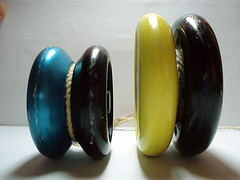 I thought about that many times since then.
I thought about that many times since then.
Yo-yos educational value: entertainment.
The educational value of my presentation: literature, literacy, writing, reading.
Yesterday, I did a school visit and I’ll be doing another next week. When I go to schools, I’m aware that I must be entertaining, but I’ve also refined some of my goals
Goals for School Visits
Foster reading and writing by making it fun, easy, accessible. I often do small group writing sessions with students. My favorite is when the students are some of the most discouraged about writing.
This month, I got to teach a class of mostly discouraged writers. We drew a map, wrote specific name places, and imagined the setting. Then, students put a finger on the map and moved around the map while telling a partner a story. Then they put their finger on a different place on the map and told the story a different way (revision in the oral stage!). Finally, they wrote their story. At the last, I asked for a volunteer to read and one girl immediately responded and read a great story. Yes, there were misspellings and a few grammar mistakes she needed to correct later; but the story was great. Teachers later told me they were astounded that this particular girl volunteered to read, because she was so shy. Confidence and joy in her writing, that’s what the girl gained that day.
Yes, it’s easy for me to come in and do a one-shot boost for a kid like that. It’s harder to do the day-to-day grind of preparing her for testing. But maybe, that one day of confidence and joy will carry her through the testing.
Help teachers enjoy reading and writing with kids even more. Teachers enjoy the enthusiasm that students have for books in the preparation for my visit, during my visit and in the aftermath. It’s a time to break the mold and have fun.
Help school community celebrate literature, something too seldom done! Several years ago, I was asked to speak at a fall reading kick-off at an elementary school. The theme for the school’s fall reading was travel and my book, The Journey of Oliver K. Woodman was perfect way to start the excitement. The librarian was amazing! When I walked into the school auditorium, every kid was waving a tiny American flag. They sang patriotic songs and were already studying large US map displayed in the library.
Now, I’ve been to sports pep rallies and they are fun. But a pep rally for reading? This was fantastic. The entire school – led by a librarian, par excellence, supported by enthusiastic staff and administration – was building a culture around a celebration of literature, reading, writing, literacy. Amazing. And still too seldom seen.
I’m no longer bashful about charging for school visits. Yo-yos are fun for a day and quite entertaining, no doubt. But as a writing teacher and author, I remind myself that I also have something of value to bring to a school. I take it seriously and work harder during a school visit than I do any other time. Why? Because one shy girl volunteered

By: Rebecca,
on 7/22/2009
Blog:
OUPblog
(
Login to Add to MyJacketFlap)
JacketFlap tags:
Elliot Gorn,
picture,
Smithsonian,
member,
J. Edgar Hoover,
John Dillinger,
morgue,
Dillinger,
Biography,
American History,
death,
A-Featured,
A-Editor's Picks,
Media,
anniversary,
dick,
Add a tag
Elliott J. Gorn is author of Dillinger’s Wild Ride: The Year that Made America’s Public Enemy Number One, is Professor of History and American Studies at Brown University. John Dillinger, celebrity outlaw extraordinaire died 75 years ago today. In the wake of his death a photo leake d to the press which showed Dillinger to be much larger than legend. In the original post below Gorn explores the myth of Dillinger’s member in honor of the anniversary of his death.
d to the press which showed Dillinger to be much larger than legend. In the original post below Gorn explores the myth of Dillinger’s member in honor of the anniversary of his death.
I’m reasonably sure that most American boys who reached adolescence in the 1960s knew about Dillinger’s dick. It was enormous, preserved in formaldehyde at the Smithsonian Institution. Friends of mine who grew up on the east coast told me years later that on high school trips to Washington, the boys would spread out and look for it. Some even claimed that they saw it. A less well-known version of the story insisted that no, it wasn’t in the Smithsonian, but at FBI headquarters, that for years it rested in a jar on J. Edgar Hoover’s desk. Others said it actually was nearby at the Army Medical Museum. Anyway, boys identified with the dead gunman and his parts—everyone knew what you meant when you referred to “my Dillinger.”
As it turns out, the Smithsonian keeps a file of letters from citizens enquiring about the legendary dingus. People write in trying to resolve arguments or settle bets or finish term papers on human anatomy. The Smithsonian has a form letter they send out routinely, denying any knowledge of Dillinger’s missing member.
Even before the Smithsonian legend, Dillinger’s manhood was part of oral tradition. Back in Indiana, the outlaw’s home state, some said that he was so large that he was not a great lover; he’d lose consciousness when aroused because so much blood drained toward his groin. Others claimed that the Woman in Red betrayed him that July night in Chicago in 1934 when the feds gunned him down because Dillinger was her lover, and she just couldn’t take it anymore.
The story of Dillinger’s legendary proportions originated with a morgue photo that circulated just after he died. There he is on a gurney, officials from the Cook County Coroner’s office gathered around, and the sheet covering him rising in a conspicuous tent at least a foot above his body, roughly around his loins, though truth be told, it looks more like where his naval should be. Probably his arm, rigid in rigor mortis, was under the sheet. No matter. It looked like he died with an enormous hard-on. Newspaper editors quickly realized how readers interpreted the photo, withdrew it, retouched it, then reprinted it in later wire-service editions, with the sheet nice and flat against the dead man’s body.
But the damage was done. Soon, Dillinger’s likeness appeared in crude pornography. Mostly, however, rumors of his enormous manhood persisted in oral tradition until roughly thirty years after his death, when it congealed into the urban belief tale centered on the Smithsonian.
In a literal sense, the story is almost certainly not true. Dillinger’s autopsy reported nothing unusual about the man. Government workers just look perplexed when asked about the legendary object. No one has ever produced substantial proof that the famed member exists.
So what does the story mean? It is a trope, a metaphor, a symbol of the whole Dillinger saga. He must have had a big one. In the midst of the Great Depression, with hunger and hopelessness everywhere, Dillinger went out and took what he wanted. He robbed from banks, which many Americans assumed had robbed them. Guns blazing, he escaped the feds time after time, and humiliated local authorities. He broke out of prisons, once famously with a wooden gun.
On the side, he had multiple liaisons with good-looking women, and they aided him in his exploits. Even as he walked out of Chicago’s Biograph Theater to his death, newspapers reported, he had a woman on each arm. The Dillinger story was one of America’s great noir moments of sex and violence, freedom and betrayal.
Americans are fascinated with rebels and renegades. We love stories about escape from the hum-drum of daily life. In fantasy, anyway, we admire those who walk away from crushing boredom and killing routine. We make heroes of anyone bold enough to live on the open road. We love our outlaws, men who oppose the over-civilized life with virile action, and who dispense rough justice.
But we also take care not to get too close, and certainly not to emulate them. Even as it makes Dillinger larger than life, the Smithsonian story is also a cautionary tale. It warns that the price of living so free and defiant is death, and in the legend, castration.
Metaphorically, it certainly was true what they said about John Dillinger. True because he lived his wild year hard and died young. True because he did it with style, coolness, and élan. And true because, in reality and in legend, he paid for it.

Posted on 7/5/2009
Blog:
Time Machine, Three Trips: Where Would You Go?
(
Login to Add to MyJacketFlap)
JacketFlap tags:
Work,
winner,
world,
Trains,
transport,
wheel,
children,
Life,
music,
Food,
picture,
television,
Technology,
Science,
car,
Parents,
families,
Inventions,
office,
hectic,
bread,
husband,
fast,
speed,
Offbeat,
motion,
motorcycles,
housewife,
aerop,
buses,
microwaves,
Add a tag
The world itself has become hectic and life a fast-forward motion picture. Wherever one goes, everything must be done speedily. This is because nowadays, almost in all families, both parents go to work, departing early and arriving late. The indoors work is thus kept pending. Beforehand, the speed of life was not so emphasized upon. Only the husband was the bread-winner and so the housewife had all the time to cook, clean and complete the household chores. Today, the parents, after a hard day’s work, must speed up and prepare something to eat for their children. People, therefore, have to follow the new trend and adjust to a new lifestyle.

Image via Wikipedia
The on-the-move lifestyle includes the eating of fast food among others. But even if “fast food” as we call it, people do not have time to eat a rounder properly; they either gulp it behind the driving wheel or eat it watching the television at the same time. To speed themselves up and save time, people make use of sophisticated machines such as microwaves to cook food quickly, portable computers to complete office work…. After a speedy week, to supposedly relax themselves, people listen to music now – quick, hasty music. It is the hard rock and technos. This music is a great contrast to the old ones that were the real relaxing music.
These small factors contribute to big inventions, speeding the transport rate. Long ago, there were ox carts and slow trains as means of transport. With the evolution of science and technology and due to the speed revolution, buses, cars, motorcycles, aeroplanes as well as super-jet trains travelling at two hundred kilometres per hour were introduced. Their need of fast transport then was satisfied. As their burden of work grew heavier, the need of a quick means of communication was also felt.
Scientists and inventors put their heads together. To support the level of speed of life and promote development, they abolished the hand-over of letters on horse-backs and established the links between one place and the whole world. Speed developed the fax, email methods. Through speed, the distance between the countries of the world is now lessened and so this helps the economic development of countries.
Speed may prove to be dangerous also. The speed of a car, an aeroplane, a ship can endanger the lives of many people, if not properly controlled. Cases of accidents where people had died are numerous. For instance, the well-known ship “Titanic” sank as a result of sailing at full speed and thus inevitably crash into an iceberg. How rightly has one stated that “haste makes waste”.

Image via Wikipedia
Stiff Competition for These Picture Book Topics
Dial editor, Liz Waniewski (ONE–es-key) spoke at the Arkansas SCBWI 2007 conference. For a couple months before the conference, she kept track of her slush pile picture book submissions by category. This resulted in my 2007 posting 12 Picture Book Topics to Avoid, one of the more popular posting in the 30 Days to a Stronger Picture Book series.
In December, 2008, I asked Liz if she might want to update the posting. She agreed and kept track of her submissions in January. The topics listed below are those which she sees over and over. She pointed out, “Just because I see these topics many times doesn’t mean you can’t write about it.” However, the competition is very stiff for picture books in these categories and your submission should really “stand out in today’s crowded marketplace.”
In comparing the 2007 and 2009 lists, you’ll see some overlap, such as grandparents. But there are new topics on the 2009 list, such as “going green.” Some differences, such as the predominance of holiday stories in 2007, may also result from the different times of the year the data was gathered. Be aware, also, that another editors list might vary widely. Still, knowing that many others writers are working on these topics, should make us either avoid them entirely, or take our manuscript to that next level.
2009 List of 10 Picture Book Topics to Avoid
- 2009 Repeated topics from 2007 list:
- Bedtime
- Cats and kittens (was pets in general in 2007)
- Visiting grandparents
- First Day of school
- Dealing with disabilities
- New for 2009 list:
- Monsters acting un-monster-like
- Going Green
- “I Love You” stories
- Boredom
- Baby Bird Learning to Fly
On 2007 List but not on 2009 list:
It would still be wise to check out the competition on these topics.
- Cleaning up your room
- Tooth fairy
- Christmas/Halloween
- “Hi! My name is. . . and I am (seven) years old!”
- New baby in the family
- Barnyard stories
- Personal hygiene


By:
Darcy Pattison,
on 2/10/2009
Blog:
Darcy Pattison's Revision Notes
(
Login to Add to MyJacketFlap)
JacketFlap tags:
book,
picture,
novel,
Judy Blume,
revision,
write,
emotion,
how to,
Fudge,
martha brockenbrough,
touchstone,
Add a tag
Touchstones: a reader’s way into your story
In this guest post by Martha Brockenbrough, grammarian, freelance writer, columnist, and author discusses how to pluck the heartstrings of your reader.
When I worked as a freelancer for a company that created really special games—games designed to draw out the best talents of each player—I learned about an idea-development strategy that has informed my writing ever since.
Touchstones. The game creators wanted questions to contain “touchstones.” A touchstone is pretty much what it sounds like—something that, when we encounter it, will evoke certain memories. I love the sensual aspect of the word—the idea that there is something we can fold into a story that readers can reach out and touch with their minds.
A touchstone is something readers can identify with. Some even cut across all cultures. Think about something like losing baby teeth. All kids do this, which is why tooth fairy stories are so important. This particular touchstone is often going to evoke happy memories, though Judy Blume managed to give it something else entirely when she had Fudge fly like a birdie from the top of the monkey bars with disastrous results.
Those monkey bars, come to think of it, are another touchstone. Think of the difference in the story if Blume had had made Fudge jump off the top of the car, or a ledge, or some other high object that didn’t have the same resonance as the highest spot in the playground. It would lose something, wouldn’t it?
Touchstones don’t always have to evoke happy emotions in writing. The death of a pet is certainly a sad touchstone that many of us can relate to. Judy Blume knew this, which is why she did what she did to Peter’s turtle.
Of course, touchstones don’t have to drive a plot. They can be used more subtly, to add sparkle and resonance to a story. The movie “Wall-E” was full of touchstones like these: Twinkies…Rubix Cubes, sporks…even “Hello, Dolly,” the music they play on Main Street at Disneyland, which means even children who haven’t seen the musical could very well have a positive association with the song.
Really, though, it’s deeper than adding sparkle—it’s connection. Touchstones provide something readers can relate to, something they can touch with their minds and hearts, even in an unfamiliar world like an Earth that’s been buried in trash. They can be a way into a story, a way to make it a reader’s own. I think that’s pretty powerful stuff.
Martha Brockenbrough
THINGS THAT MAKE US [SIC]- St. Martin’s Press, October 2008
- Founder, the Society for the Promotion of Good Grammar
- Cinemama, MSN Movies
- Columnist, MSN Encarta
 Martha Brockenbrough is author of Things That Make Us [Sic], a funny guide to bad grammar published by St. Martin’s Press, and Founder of the Society for the Promotion of Good Grammar. She’s also a busy freelance writer, contributing the Cinemama column to MSN Movies, and columns on language and pop culture to the online encyclopedia Encarta. She also blogs about family life for the calendar company, Cozi, and is hoping 2009 is the year she sells her first children’s manuscript.
Martha Brockenbrough is author of Things That Make Us [Sic], a funny guide to bad grammar published by St. Martin’s Press, and Founder of the Society for the Promotion of Good Grammar. She’s also a busy freelance writer, contributing the Cinemama column to MSN Movies, and columns on language and pop culture to the online encyclopedia Encarta. She also blogs about family life for the calendar company, Cozi, and is hoping 2009 is the year she sells her first children’s manuscript.
If you want to do a guest posting, or if you have a revision story you’d like to share, email me at darcy at darcypattison dot com.


By:
Darcy Pattison,
on 2/5/2009
Blog:
Darcy Pattison's Revision Notes
(
Login to Add to MyJacketFlap)
JacketFlap tags:
children,
life,
books,
creativity,
picture,
writing life,
writing,
quotes,
novels,
darcypattison.com,
Add a tag
Many speakers used quotes in their presentations or made memorable statements. Here’s my collection of quotes from the conference:
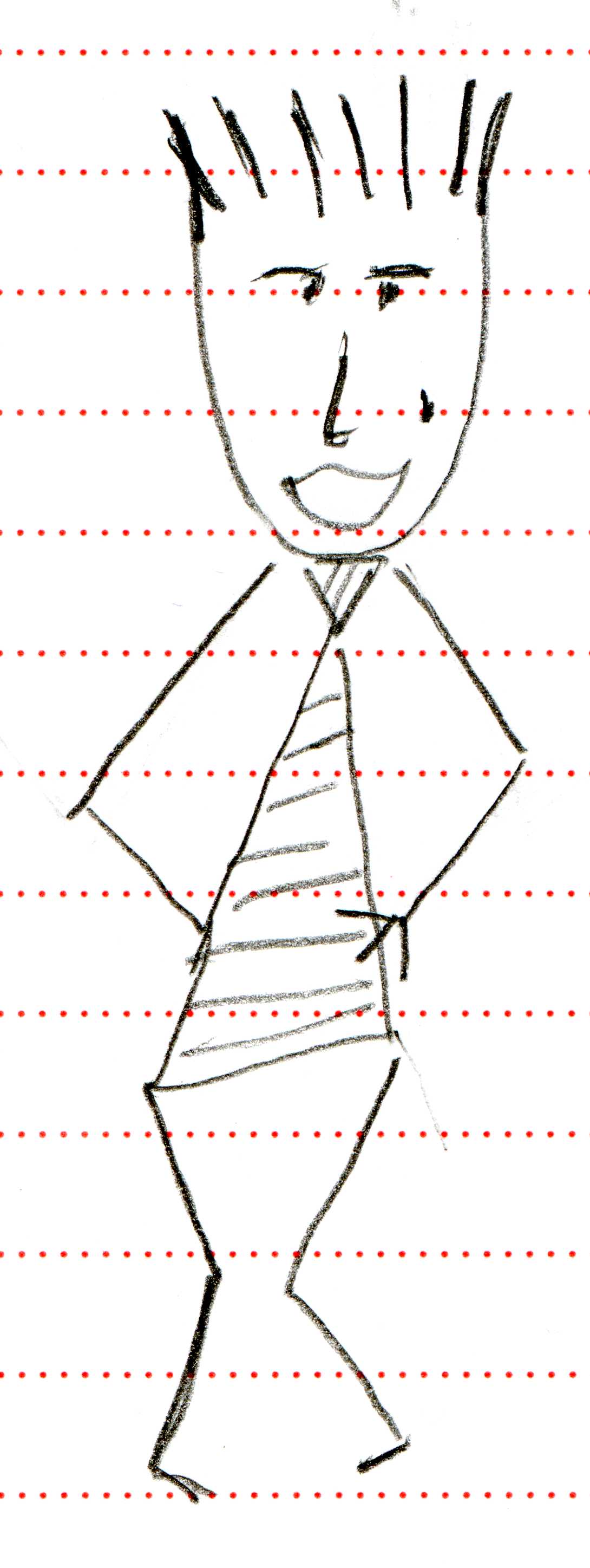 About True Love: “It’s great when a publisher loves my work, but a contract is better; a contract is True Love.” Jarrett J. Krosocka, picture book and graphic novel author and illustrator.
About True Love: “It’s great when a publisher loves my work, but a contract is better; a contract is True Love.” Jarrett J. Krosocka, picture book and graphic novel author and illustrator.- Humorous Take on True Depression: “It’s like, no one has blogged about my book in two days.” Jarrett J. Krosocka, picture book and graphic novel author and illustrator.
- “Nothing good comes from reviews.” Paul Newman, actor.
- “I only wished to publish a book or two that lasts.” Susan Hirschmann, founder of Greenwillow Books
- “Magic doesn’t create: it summons.” Richard Jackson, editor.
- “You write books for children? Huh. I guess someone has to do that.” Woman on plane to Bruce Hale, author.
- “There is no terror in the bang–only in the anticipation of it.” Alfred Hitchcock, film director.
- “Fiction is a lie and good fiction is the truth inside the lie.” Stephen King, author.
- “We must continually be jumping off cliffs and growing our wings on the way down.” Kurt Vonnegut, author.
- “There is no agony like bearing an untold story inside you.” Zora Neale Hurston, author.
- “Sure it’s simple writing for kids. . .Just as simple as bringing them up.” Ursula K. LeGuin, author.
Enjoy the Conference Notes? Subscribe to Revision Notes by Email.


By:
Darcy Pattison,
on 2/5/2009
Blog:
Darcy Pattison's Revision Notes
(
Login to Add to MyJacketFlap)
JacketFlap tags:
editor,
book,
picture,
novel,
writing life,
submissions,
Scholastic,
genre,
2009,
Add a tag
One main reason to attend a national conference is to meet editors, listen to how they describe their lists, and find out what they are looking for. Attendees are usually offered an opportunity to submit for a short period of time, even if the house policy is no unsolicited manuscripts.
Needs Books that Inspire this Response
If you have a book that makes others say, “You’ve got to read this book!”, then Jennifer Rees, Editor at Scholastic Press wants to see it. More than other editors, she comes at this enterprise as an enthusiastic reader who only wants to connect your story with many more readers. Smart, articulate and savvy describes her presentation.
Genre almost doesn’t matter to Rees, as long as the story is making a connection with the reader; for those stories, Rees wants to make an editorial connection with the author and help him/her grow.
She grew up on a Pittsburg farm, has an English degree, and worked for several years at an independent book store where she literally hand-sold books with the comment, “You’ve got to read this book!” Her five-year-old son finally realized that she helps make books and told her, “That’s cool! But not as cool as Batman!”
Scholastic’s Submission Policy: Agented submissions only.
Because she pays little attention to genre, instead, she provided this list of what she’s looking for:
- Distinctive voice
- Memorable, real, believable characters. She wants to know them inside and out.
- Something that aims to set its own trends. (She sees far too many Harry Potter and Twilight ripoffs.)
- Story that keeps her guessing — in a good way.
- Story out of the Box — surprise, storyline, blended genres, etc.
- Risky writing. Write the story that keeps you awake at night.
- Lyrical writing. Make it sing. NOT flowery, but something you can’t put down.
- Professional package. She suggests you workshop your cover and query letters, too.
- Writers who know the market.
- Manuscripts that are a good match for her and for Scholastic — no blind submissions.
- Satisfy your inner child and it will satisfy her inner child. Write a love letter to yourself as a child.
Tips from Jennifer Rees
- Query letters. These should read like flap copy or an elevator pitch. They should make her excited to read the entire manuscript.
- Stand alone v. series. Pitch a stand alone book, not a series. If the first does well, you can talk series.
- Hates email queries.
- Poetry should be disguised as a picture book.
- Rees defines “edgy” as “fiction with attitude.”
Enjoy the Revision Notes? Don’t miss a posting! Subscribe to Revision Notes by Email.


By:
Darcy Pattison,
on 2/4/2009
Blog:
Darcy Pattison's Revision Notes
(
Login to Add to MyJacketFlap)
JacketFlap tags:
YA,
children,
books,
book,
picture,
novel,
writing life,
middle grade,
child,
houghton mifflin,
jennifer,
clarion,
greene,
Add a tag
One main reason to attend a national conference is to meet editors, listen to how they describe their lists, and find out what they are looking for. Attendees are usually offered an opportunity to submit for a short period of time, even if the house policy is no unsolicited manuscripts.
Needs Contemporary, Upper Middle Grade and YA
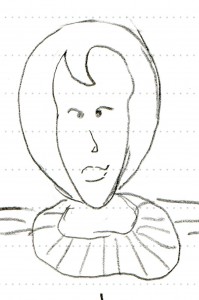 Jennifer B. Greene, Senior Editor at Clarion Books (an imprint of Houghton Mifflin Children’s Books) talks fast and passionately about the books she has published.
Jennifer B. Greene, Senior Editor at Clarion Books (an imprint of Houghton Mifflin Children’s Books) talks fast and passionately about the books she has published.
Clarion’s submission policy: Open to unsolicited, but will not respond unless interested. Do not include an SASE. NO email submissions. Greene adds that personally, she’s not a fan of query letters, but would rather see the entire fiction manuscript. For nonfiction, she needs to see a detailed proposal with sample chapters. Be aware, though, that for a first contract with an author, Clarion wants to see a completed nonfiction manuscript.
She handed out a long list of books that she has edited, or wishes she has edited. Like many other editors, she looks for fresh, distinctive and original books.
Specific needs:
- Preschool Picture books. Quirky & subversive, with illustrations that have vintage appeal. No bedtime stories. Books shouldn’t be for adults for should reflect the early experience of preschool or early elementary kids.
- Multicultural. Only 2 % of books feature Latino characters, yet our population has many bilingual families. Asian folktales, especially if they affirm our shared humanity.
- Nonfiction picture books. These are often for upper elementary students. Would like to see something on the topics of art, food, architecture, design.
- Nonfiction for older readers. Wide variety of nonfiction topics and biographies.
- Fiction. For either middle grade or YA readers, Greene looks for character oriented stories. Emotionally true. Not fast-paced action. Would like to see something in an alternate universe, apocalyptic stories, life after death. By or about emigres, especially India, Pakistan and Bangladesh. Something that includes the clash of cultures.
Does NOT want to see
- Rhymed picture books
- Picture books written for adults instead of kids
- No mass market ideas.
- For historical fiction, setting is secondary to characters. Make sure it’s a character driven, literary story.
- Chick-ick
- Romance
- Sports
There is MORE from the Conference coming this week! Subscribe to Revision Notes by Email.

.jpg?picon=380)
By:
[email protected] (Mark Blevis and Andrea ,
on 12/1/2006
Blog:
Just One More Book Children's Book Podcast
(
Login to Add to MyJacketFlap)
JacketFlap tags:
review,
children,
Ages 4-8,
Detailed,
Creativity,
Picture book,
Girl,
Resilience,
Hope,
Life Skills,
Busy,
Visual,
Patience,
book,
literacy,
literature,
Perseverence,
dog,
fiction,
persistence,
pet,
picture,
podcast,
Add a tag
 Author: Dayal Kaur Khalsa
Author: Dayal Kaur Khalsa
Illustrator: Dayal Kaur Khalsa
Published: 1994 Tundra
ISBN: 088776326X Chapters.ca Amazon.com
You can’t always get what you want, but if you try, try, try again you might enjoy yourself anyway. In a quiet explosion of colour, character and creativity, this book tells us how.
Links mentioned:
Tags:No TagsNo Tags
.jpg?picon=380)
By:
[email protected] (Mark Blevis and Andrea ,
on 11/24/2006
Blog:
Just One More Book Children's Book Podcast
(
Login to Add to MyJacketFlap)
JacketFlap tags:
review,
children,
Picture book,
Fun,
Animal,
Hilarious,
Humour,
Mischief,
book,
literacy,
literature,
dog,
picture,
All ages,
ages4+,
pets,
podcast,
Add a tag
 Author: Jeanne Willis
Author: Jeanne Willis
Illustrator: Tony Ross
Published: 2002 Andersen Press Ltd
ISBN: 1842701703 Amazon.uk
Full of understated misinterpretations and over the top Tony Ross illustrations, this book is as hilarious for adults as it is for children. If your library doesn’t have a copy, we suggest swimming to the U.K. to find one. It’s worth the trip.
Tags:
ages4+,
book,
children,
dog,
hilarious,
humour,
literacy,
literature,
pets,
picture,
podcast,
reviewages4+,
book,
children,
dog,
hilarious,
humour,
literacy,
literature,
pets,
picture,
podcast,
review
.jpg?picon=380)
By:
[email protected] (Mark Blevis and Andrea ,
on 11/20/2006
Blog:
Just One More Book Children's Book Podcast
(
Login to Add to MyJacketFlap)
JacketFlap tags:
review,
reading,
Ages 0-3,
Ages 4-8,
Picture book,
Friendship,
Fun,
Boy,
Life Skills,
Cute,
book,
literacy,
literature,
picture,
age3 8,
podcast,
Add a tag
 Author: Gilles Tibo
Author: Gilles Tibo
Illustrator: Bruno St-Aubin
Published: 2004 Scholastic Canada
ISBN: 0439967538 Chapters.ca
Of course, we are in complete agreement with the idea of this book: that books can provide valuable information and great entertertainment. We must admit, however, we’re a bit mystified at how much our girls love this book. They can never get enough of it.
Tags:
age3 8,
book,
boy,
literacy,
literature,
picture,
podcast,
reading,
reviewage3 8,
book,
boy,
literacy,
literature,
picture,
podcast,
reading,
review
.jpg?picon=380)
By:
[email protected] (Mark Blevis and Andrea ,
on 11/17/2006
Blog:
Just One More Book Children's Book Podcast
(
Login to Add to MyJacketFlap)
JacketFlap tags:
review,
children,
Podcast,
Family,
Ages 4-8,
Compassion,
Forgiveness,
Generosity,
Gratitude,
Picture book,
Girl,
Friendship,
Resilience,
Beautiful,
Appreciation,
Fun,
Boy,
Cartoony,
Hilarious,
Humour,
Rhyming,
siblings,
Mischief,
Patience,
book,
picture,
Honesty,
podcast review kidlit,
Add a tag
 Author: Berkeley Breathed
Author: Berkeley Breathed
Illustrator: Berkeley Breathed
Published: 2003 LITTLE BROWN AND COMPANY
ISBN: 0316144258 Chapters.ca Amazon.com
Packed with action and emotion and carried by catapulting rhyme, this hilariously original story reminds us that caring siblings are gifts to be treasured.
We’re thankful for the caring sibling we have!
Two thankful Canadians wish you a safe & happy Thanksgiving season, wherever you are.
Tags:
appreciation,
book,
children,
friendship,
honesty,
picture,
podcast,
review,
siblingsappreciation,
book,
children,
friendship,
honesty,
picture,
podcast,
review,
siblings
View Next 5 Posts












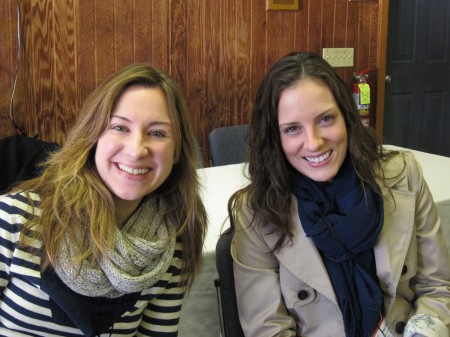













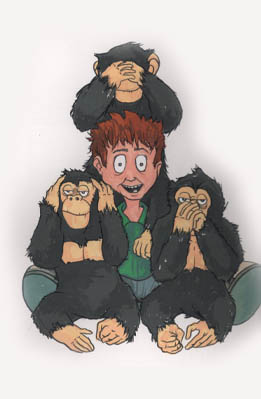
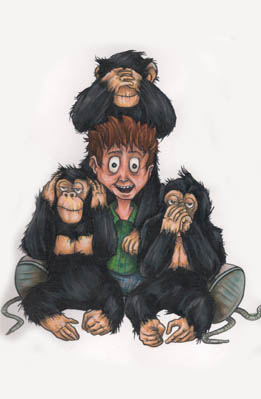
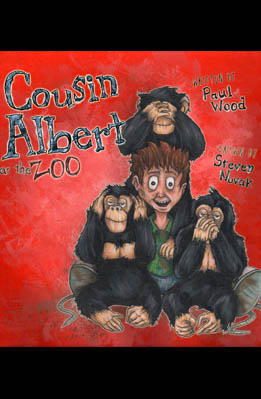




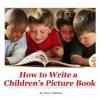 How to Write a Picture Book
How to Write a Picture Book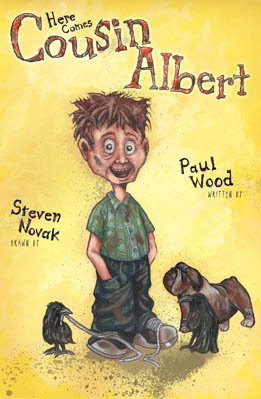
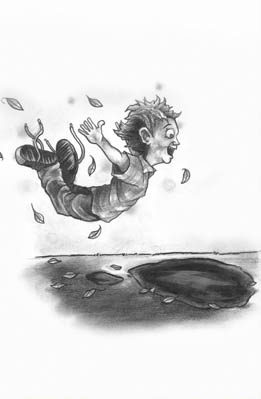
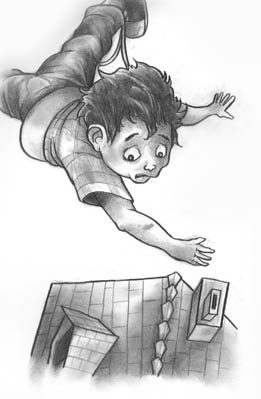
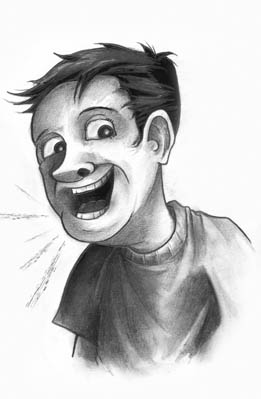
 I thought about that many times since then.
I thought about that many times since then.



 About True Love: “It’s great when a publisher loves my work, but a contract is better; a contract is True Love.” Jarrett J. Krosocka, picture book and graphic novel author and illustrator.
About True Love: “It’s great when a publisher loves my work, but a contract is better; a contract is True Love.” Jarrett J. Krosocka, picture book and graphic novel author and illustrator. Jennifer B. Greene, Senior Editor at
Jennifer B. Greene, Senior Editor at  Author:
Author:  Author:
Author:  Author:
Author:  Author:
Author:
This picture reminded me of a time when I was about 11 years old. We used to go to a local “pond” and there was a big old oak on the bank which had a rope hanging from it. We would run, jump “tarzan style” onto the rope and swing out over the pond – letting go as we swung out and taking a “flying leap” into the water. One Sunday afternoon, I ran from the car, jumped for the rope – grabbing it with both hands and – BANG !!! My head hit the tree and left a scar which I still have in my temple until this very day. I had not noticed that someone had wrapped the rope around the tree one time – it was not hanging free. As I swung out – I actually flew in a circle, right back into the tree trunk!
oh no! Owch! I can just picture that!!!!! haha!